Perfect is the enemy of good
Published on February 7th, 2022
When it comes to iceboating, Scuttlebutt HQ is about as far from and as unlike a climate than that of the USA hardwater sailors. Maybe that fuels our fascination. New Englander James Thieler, who recently finished second at the 2022 DN U.S. Nationals, reflects on the event that was.
As it happens so often the weather was making things a challenge – the group that selected the venue certainly had a lot to do. Many thanks to them for making it happen yet again!
Off we went, headed for Madison, WI. Had a good day or two of sailing out there but then the snow came and put an end to that option so we had a day or two to hang at the Airbnb and take a day trip up to Oshkosh to check out the airplane museum.
Then it was down to Senachawine Lake in Central Illinois, the best game in town! There was a bit of snow on the ice, sticky drifts that made getting up to full speed a challenge – less than perfect but it was a venue! In iceboating, if you wait for perfect you will sail about once every three years. Maybe.
The breeze and dense snow drifts were a lot to deal with and made things difficult. Or they presented opportunities to excel, take your pick! In any case it was fast, physical sailing! In conditions like this, the boat can’t gain speed easily and has a tendency to hike up, which is slow and annoying. I dealt with this by raising my main halyard about a half inch which makes the mast a little more bendy and forgiving.
I also didn’t hesitate to throw my body weight aft and outboard out of tacks and gybes to get the mast to pop out and get the boat going again. Steering with the tiller between the knees also allows two hands to stay on the mainsheet and make more accurate adjustments to the mainsail – a slight, controlled ease in a big puff will allow the leech to open up a bit without letting the mast straighten out. This is critical!
So there was a lot to keep track of during the races – speed, shifts, controlling the boat, all the while looking for lanes through the drifts. They weren’t always obvious but you could usually find a path that wasn’t as bad as the surrounding area. If you could find a clear lane wide enough for all three runners, life was good for a few seconds.
More often you’d have to let the windward runner go through the drift. Even worse you’d have to let the front and windward runner hit one. Worst case was having to go through one with all three, and when this happened it was important to slide aft a bit and ease the sheet an inch to keep the boat on its feet and keep the flow attached to the leeward side of the sail as the boat slowed and the apparent wind went aft.
As I said, there was a lot to keep track of! If you were able to get in the zone it was a great feeling…. Looking for clear areas to tack and gybe in was a priority as well. In those conditions I think it helps to keep your head up and look for the clear lanes rather than tuck in for less wind resistance. I figure snow drifts are thicker than air so it’s worth it to keep an eye on them!
The other big story is about the Canadian Invasion. The groups from Kingston and Montreal have really been putting in the time and effort individually and as teams – they have managed to grow their fleets, refine their gear, and most importantly practice together and share what they learn with each other, before, and during the event.
Getting a regatta like this pulled off is a massive undertaking and involves a small army – I know I’ll miss a few names but major thanks go out to Deb Whitehorse, Erica Baker, Dan Heaney, Bill Coberly, Fred Stritt, Mercedes Auger, Sean Heavey, Gretchen Dorian, all the national and regional commodores, all the ice scouts, and all the competitors too! Really an amazing group!


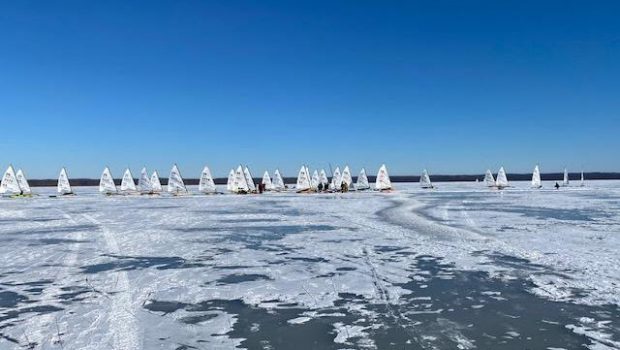


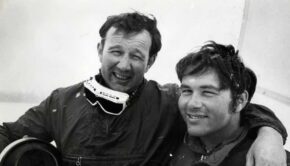
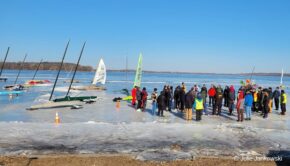
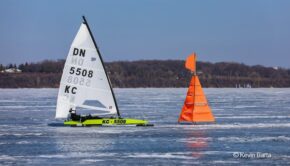
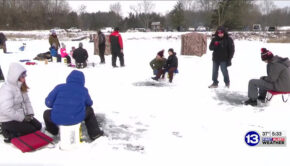
 We’ll keep your information safe.
We’ll keep your information safe.